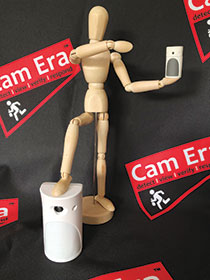

When Hi-Tech Security Solutions was still a fledgling publication, alarms connected to a control room were all the rage in South Africa. Back in those days the only options were having a VHF signal to send alarm signals to the control room, and all the control room could do was radio its armed response (if they had one) to respond and make a landline call to the customer.
These days, the security industry has advanced substantially and our technology can’t be compared to what was available way back then. However, most alarms for households and even businesses still work on the same principle. While the communications mediums used may sometimes be different, the process is the same.
This state of affairs is changing. Today, the vast majority of alarms turn out to be false alarms. Depending on who you ask, up to 99% of alarms raised these days are false alarms caused by pets, wind, people who forget to switch off the alarm when they arrive, and so on.
As Cam Era’s Bill Sandham calls them, ‘blind alarms’ are soon to be a thing of the past. He says today an alarm should have additional technology to ensure that guards are not dispatched to false alarms. The technology Sandham refers to is visual (or video) verification, adding video surveillance to an alarm to allow the response company and/or user to see what caused the alarm and only dispatch a response knowing that something is actually happening.
Sandham launched Cam Era to broaden the reach of visual verification alarm solutions through a franchising operation (see https://www.securitysa.com/61103n for more on the franchising option).
Visual verification does more than prevent the dispatch of armed response units for no reason, it also aids guarding companies in discovering threats that would otherwise be ignored. For example, Sandham says that we are seeing more break-ins coming through the roof. Even when the criminals raise the alarm and an armed response unit is dispatched, the guard probably can’t get onto the property and won’t see any signs of a break-in, and therefore leave. With visual verification, a video clip of the intruders will be available to the company, letting them know there is a real threat, where, how many there are and even if they are armed.
The tools in the package
Cam Era’s offering can work with customers’ current guarding companies or as a standalone operation. The technology used for alarm detection and activation is Videofied, a battery operated motion sensor and camera built into one. Users can also use an app on their smartphone to view video clips and delete ones not required. Sandham also notes that the batteries can last for up to four years, depending of course on how often an alarm is triggered and how often the user views a live video feed.
When an alarm is detected by the motion sensor, an alarm is raised in the PSIRA-accredited control room run by Macado, along with a 10-second video clip from the camera. The operators are trained to handle any situations and can alert the customer, an armed response company or the police – or all three.
The three laws
Cam Era’s operating procedure is based on the three laws of surveillance: detection, recognition and identification (a short video on the three laws can be viewed at https://youtu.be/J_wLDKcB6Uo).
Detection, in which the potential intruder takes up only 10% of the screen, is important even though the image may not allow for identifying an individual. All the user and/or control room needs is an image that makes it possible to determine there is a person in the image and not a dog, for example. This is the core part of visual verification as it prevents any additional actions being initiated, saving time, money and the nerves of users.
Since the Videofied device allows voice communication, the operators can also speak to the intruders, which is often enough to persuade them to leave the premises. Alternatively, the operator can set off an alarm, activate lights or even deploy an industrial fogging system to fill the room with mist, effectively blinding the intruders. Pepper spray is also an option.
Higher resolution cameras are also available for companies looking to recognise or identify people in specific environments, such as retail stores, etc., as well as for those looking to protect perimeters or larger areas using the same technology.
Cam Era franchises are available and Sandham says the franchisees get a complete ‘business-in-a-box’ with everything they need to get their new operation up and running.
To find out more go to https://cam-era.co.za/

© Technews Publishing (Pty) Ltd. | All Rights Reserved.